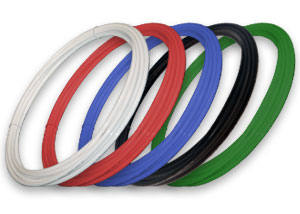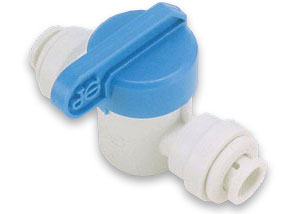What is Ultraviolet Light and Ultraviolet Sterilization?
Ultraviolet or UV light has a wavelength longer that x-rays but shorter than that of visible light and is a form of electromagnetic radiation. Ultraviolet sterilization is the process of using UV light to kill microorganisms in water. Ultraviolet light is emitted by our Sun, however most of the mid and higher range wavelengths are blocked by ozone gas in our atmosphere. The lower range which borders the violet end range of visible light has more visible effects can be seen in manufactured devices that use UV light, such as tanning beds or black lights.

How Does Ultraviolet Sterilization Work?
Ultraviolet light is split into several different ranges: (near the visible light range) UV-A, UV-B, UV-C, Vacuum-UV (near the x-ray range). The UV-B range is what causes sunburn on humans. UV water purifiers use the UV-C range because of its germicidal abilities. In this range the light light will break molecular bonds in the DNA of viruses and bacteria, rendering them unable to reproduce and effectively killing them.

What is a ‘UV Dose’?
| Standard | Dosage |
|---|---|
| US Public Health Standard – EPA | 16mJ (high capacity stated) |
| Industry/Manufacturers Standard | 30mJ (primary capacity stated – top of page) |
| NSF Standard | 40mJ (lowest capacity stated) |
A UV dose refers to several factors which determine how effective the ultraviolet sterilization is. Transmittance is how much light is reaching the target, solids suspended in the water will block UV light from reaching the edge of the chamber and exposing all of the water. Flow rate is how fast the water is moving through the system, a faster flow rate reduces exposure time and therefor the effectiveness. Tubidity is a measurment of how cloudy or clear the water is, a high turbidity means the UV light can not reach the edge of the chamber and is only sterilizing the water nearest to the lamp. Lamp age is another factor, as over time the lamp’s UV intensity diminishes. Fouling of the lamp and/or sleeve will also diminish the lamp’s effectiveness.
What Contaminants Does UV Light Kill?
| Contaminant | Dosage required to sterilize (mJ/cm2) 99% Effectiveness |
|---|---|
| Cryptosporidium parvum oocysts | 8 |
| Giardia lamblia cysts (Beaver fever) | < 10 |
| Vibrio cholerae (Cholera) | 3 |
| Shigella dysenteriae (Dysentery) | 3 |
| E.coli (Escherichia coli O157:H7) | 6 |
| Salmonella typhi (Typhoid fever) | 9 |
| Shigella sonnei | 9 |
| Legionella pneumophila (Legionaires’ disease) | 10 |
| Salmonella enteritidis (causes gastroenteritis) | 10 |
| Hepatitis A virus | 16 – 30 |
| Poliovirus Type 1 | 21 – 30 |
| Coxsackie B5 virus | 30 |
| Rotavirus SA11 | 31 – 36 |
Sources of Information on Ultraviolet Sterilization
Our Ultraviolet Sterilization Systems














































